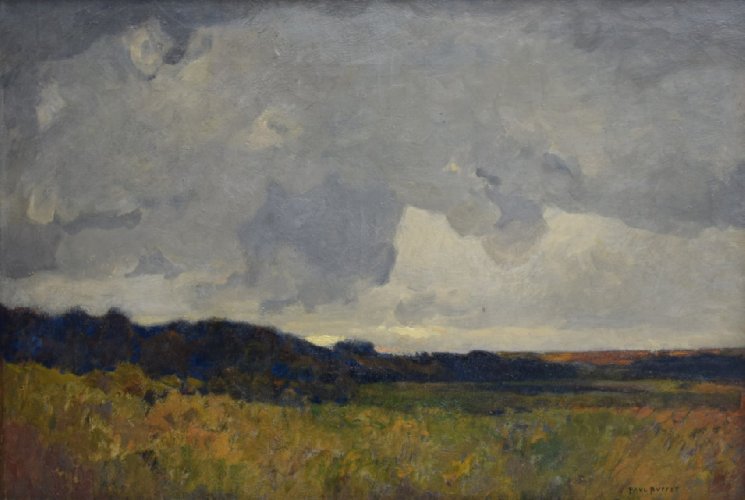Description:
Paul (Abbot Paul) Buffet (1864-1941) – a French artist and illustrator born in Paris specializing in historical, Oriental and landscape painting. From 1885 he trained at the École des Beaux-Arts in Paris with Gustav Boulanger and Jules Lefebvre. From 1886 he exhibited at the Salon de Société des Artistes Français, of which he became a member the following year.
In 1892 he joined the Société des Peintres Orientalistes founded by Léonce Bénédite. For a picture inspired by Gustave Flaubert’s novel “Salammbô”, exhibited at the Salon in 1894, he received a scholarship, thanks to which he visited Italy and Ethiopia, where he portrayed Emperor Menelik II. Author of frescoes in public and church buildings in France and Spain. From 1911 a member of the Comité des Orientalistes Français and an official painter of the Ministry of Colonies. In 1916, after completing a seminary in Issy-les-Moulineaux, he became a chaplain and catechist of the novitiate orphanage in Auteuil, and three years later a chaplain of the “Jeunes Catholiques des Beaux-Arts” and the “Société de S.-Jean pour l’encouragement à l’art. Chrétien”. Awarded numerous awards. From 1935 a knight of the Legion of Honor.
Description of the painting:
The landscape depicted, painted with broad, impasto strokes, shows a vast, deserted meadow at the forefront, enclosed by a line of trees and a small hill in the distance. Above this view captured from a slight elevation, there is an endless expanse of sky covered with heavy, billowing clouds. Their milky, gray-blue and steel formations influence the muted olive-green-golden tonality of the meadow and the brown-green fading into ultramarine shade of the tree and bush crowns. This strong, dark strip separating the meadow from the sky is enlivened by gilding field scrub and gold-gray slopes of the distant hill.
Buffet’s composition is a color impression built with muted colors that conveys the mood of a cloudy, warm, still autumn day. We find in it the outdoor sensitivity of Impressionism to light and color and the synthesizing tendencies of Post-Impressionism.


